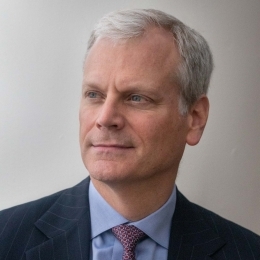Remarks to the Peruvian Congress: Expanding Trade, Promoting Development, Growing Together
Remarks to the Peruvian Congress: Expanding Trade, Promoting Development, Growing Together
"Peru shows the undeniable power of trade agreements to drive growth," said AS/COA's Eric Farnsworth at an event during the APEC summit in Lima.
EXPANDING TRADE, PROMOTING DEVELOPMENT, GROWING TOGETHER
REMARKS TO APEC CIUDADANO LEGISLATIVO
CONGRESS OF THE REPUBLIC
LIMA, PERU
NOVEMBER 13, 2024
ERIC FARNSWORTH
VICE PRESIDENT
COUNCIL OF THE AMERICAS
*** Text as Delivered ***
What an absolute joy it is for me to be back in Lima to address this very important forum. I am thrilled to have the opportunity to join President of the Congress [Eduardo] Salhuana, Canciller [Elmer] Schialer, and U.S. Ambassador Stephanie Syntek-Ramnath for this timely and meaningful dialogue on the importance of trade and its impact on empowerment, inclusion, and growth.
And I also want to congratulate APEC SOM Chair Ambassador Carlos Vasquez and all of your colleagues in the government and organizing committee who have made this year’s APEC forum yet another resounding success.

Leaders, parliamentarians, distinguished guests, ladies and gentlemen: Peru, for me, is a nation with virtually limitless potential. In the words of the late academy award winning actor Dean Stockwell, “If you ever have a chance in your life to go [to Peru], you should do it, because [Peru] is absolutely mind-boggling.” The hospitality and industriousness of the Peruvian people continue to shine. More simply, to quote Morrissey, Peru is “my heart’s lighthouse.”
I have had the privilege of attending previous APEC forums hosted by Peru, in 2008 and also 2016. Each one is a wonderful showcase of the best of Peru, beginning with the people, including your world-class cuisine, and highlighting your rich culture. And I know that this one will do the same.
But more than that, Peru’s host years offer snapshots of the progress that continues to be made, and also areas for continued attention. A chance to take stock, to recognize the opportunities and importance of Peru to South America and to the entire Asia-Pacific.
It’s no wonder why. Peru enjoys some of the world’s most important mining and energy resources—including the second-largest deposits of copper worldwide—resources which are absolutely critical for global energy transition.
The nation boasts an incredibly rich agriculture sector and legacy, as the home of the potato, and also a major exporter of asparagus, blueberries, and other products. Peruvian cotton and specialty textiles made from alpaca and vicuña are highly valued. The fishing grounds off the Peruvian coast teem with untold bounty.
And, of course, tourism services are literally head of class, from Nazca, to la selva, to Machu Picchu and beyond. Peru’s global heritage is incomparable, and invaluable. And it must continue to be carefully protected.
Much of Peru’s economic and social development, of course, can be directly attributed to trade with global partners. In fact, the country is a case study in the use of trade to promote broad-based economic development and opportunity in the formal economy.
If the United States does not pay more attention to the region, "needs will be fulfilled by China," said the AS/COA vice president to the radio network.










